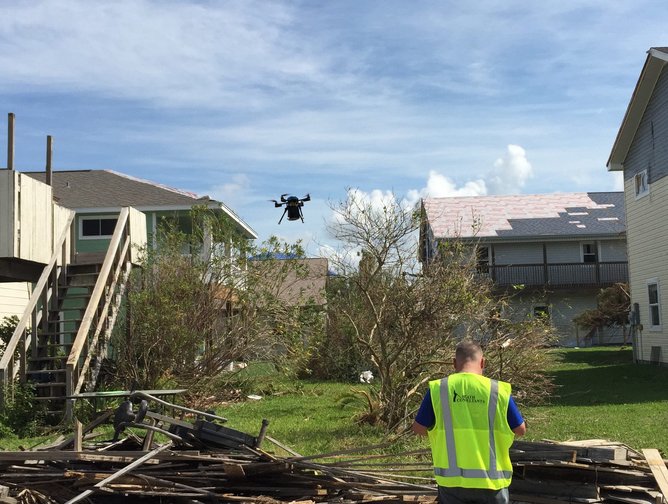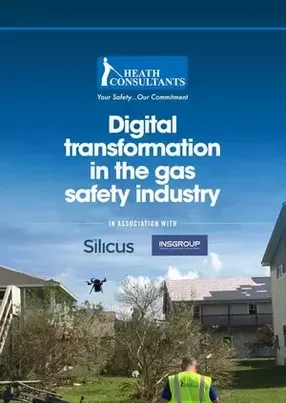Heath Consultants is bringing digital transformation to the gas leak detection industry
Established 86 years ago, Heath Consultants is now run by the third generation of the Heath family. The business is the premier leader in the natural gas leak detection industry, servicing utility companies “all the way from the well head to the burner tip”, explains Paul Wehnert, Senior Vice President of the Sales and Marketing unit. “Primarily, we’re a leak detection, underground utility locating service, and products manufacturing firm,” adds Wehnert.
The company employs around 1,500 people across 44 states in the US, but has earned an international presence through the distribution of its products. A main aspect of the company’s operations is conducting leak surveys. “A leak survey primarily consists of a person walking around documenting on paper where they went and what they found. However, the industry is currently going through a transition from paper documentation to digital documentation,” remarks Jeff Tuttle, CEO of Heath Consultants. “The way in which we conduct these surveys is now all in transition – whether the person is walking or driving by vehicle, the instrument readings, position of the person and detections are all recorded.” Heath is also expanding its technological footprint with the launch of its DP-IR Trainer, software that uses augmented reality to train workers how to conduct leak surveys.
Beyond how the information is acquired and stored, the company is also expanding its analytics capabilities through a partnership with software development company Silicus. Heath is now able to evaluate the leak information, such as methane readings and pipe quality. “We can ask: ‘Where are the risky sections of pipe? Where are they located?’ We can then provide a thesis or data source to that,” continues Tuttle.
The company has leveraged its core gas detection technology and connected it with a cloud analytics package. This enables oil producers to then conduct Leak Detection and Repair (LDAR) work, which often takes places in remote areas. The industry is shifting from using portable technologies that an individual would carry to technology that is connected to the internet, such as data logging, GPS and the cloud. “We still have portable platforms, but connected portable platforms. We have mobile platforms where we have vehicles that drive around a city network, and we have aerial platforms like drones and UAVs,” says Tuttle. The CEO highlights the introduction of connected methane sensors placed amongst city grids, available on a 24/7 basis.
However, the role of analytics has a much greater presence in the company’s overall business strategy. “For us on the operations side, it’s also important from a digital transformation perspective to collect data on the performance of our technicians,” notes Ken Cowher, Vice President of Operations for Heath’s Service unit. “It is important we have a standardized and automated way of doing that to ensure we get good quality data we can run predictive analytics on. This allows us to proactively manage our crews and make them as efficient as possible.” Cowher explains that all service operations lie within a competitive bid industry, which in turn means that efficiency is key.
The company uses Microsoft’s Azure cloud to host many of its systems, including RMLD-Remote Emissions Monitoring. Heath is piloting the sensor-based technology that enables it to monitor for leaks 24/7. The firm is almost ready to introduce its Leak Survey Analytic, also based in Azure, which harbors the data from thousands of surveys. “Every detail over time is captured and made available at a click so we can analyze the quality of the survey, the completeness of the survey and provide some of the risk factors that feed into some of these pipeline risk models,” Tuttle comments.
Heath has also partnered with Novara Geosolutions, the asset management products and services company. “We’re working with them to develop a field application for our leak survey technicians to use. It will integrate with customer facility mapping and track breadcrumb indications of the leak surveyor and the path that they take over the pipeline. It will include indications that we find, abnormal operating conditions – anything that would be a reportable situation from the survey – and feed that information back to the customer whilst connecting with our billing system,” explains Tuttle.
As well as addressing technology transformation within its operations, Heath Consultants is also becoming very aware of sustainability issues in its industry. “The industry is really going through a major transition with emission reduction – it grew up doing the surveys from a safety standpoint, assessing the potential hazards of gas leaks in homes and buildings. Heath grew up with the paramount mission to find the dangerous leaks, help utilities and mitigate them by repairing the pipe. Now with the concerns over climate change, methane is one of the gasses that is of most concern – this gas can leak from any point along the chain. We’re trying to reduce that,” says Tuttle.
Working from the well pad up, the company goes through various processes in moving and producing the gas which emits the most greenhouse gases. “The well head, the well and the tank battery which the oil is stored in are all prone to emitting the gasses that come along with the oil. There’s quite a bit of focus, activity and research on gas detection and we are participating in that emerging technology,” Tuttle says.
With Heath focusing on its digital transformation journey, the firm sees itself at the centre of a digital future. “Our company’s operations will us more fix sensor technologies and more autonomous type activities. We’ll be exploring a lot of that with vehicles and UAVs, with autonomy providing safety inspections of these safety grids within these smart cities,” says Paul.





